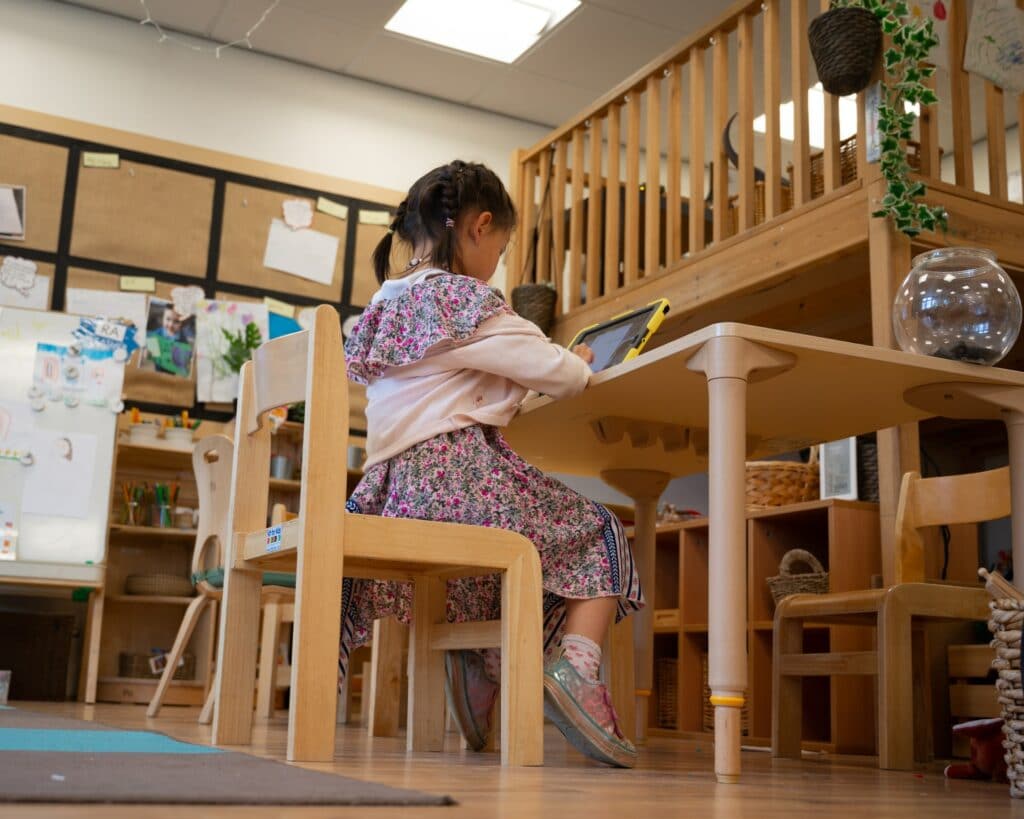Simple Ways to Support Your Child’s Online Learning
Have you found yourself doubling as your child’s home educator? With more schools getting on board with online resources, your role should be more that of a friendly supporter, snack-maker and IT technician than an actual teacher this time around. We’ve put together a quick guide to help you support your child to learn at home, age by age. (This article is for families following a remote curriculum set by their schools. It’s not for the real home educators, those multiskilled parents who do this full-time. If you’re reading this, we rookies salute you.)

Helping younger primary children
If you’re also working from home, this can put pressure on both your time and your hardware. Even techy households will find their home set-up stretched to its limits at some point (but please, if you’re really struggling, talk to the school).
With the youngest primary age groups, teachers mainly use online resources for sending parents downloadable worksheets and links to useful sites (learned tip: buy printer ink before it runs out). Online lessons with younger students can be pretty anarchic and only form part of the day, although it does help your child to see their teacher’s familiar face and wave to their friends. What’s more, it can be great fun and encourages children to start embracing virtual technology.
The best thing you can do to support your young child is to create a routine. Little ones are very much about routine, and if you can recreate any sort of timetable for your day, they’ll feel more settled. It’ll also help you schedule in your own work, reducing the pressure. For your own sake, make sure you build in plenty of running-off-steam time: there are good reasons why most schools have three playtimes a day…

Home school for older primary kids
Junior school-age kids are a more sophisticated group, and as the upper ages in this group often sit exams, the work can be more academic. As older children have better concentration, teachers may organize more live classes, and use platforms like Google Classroom to set work.
The most supportive thing you can do to help your child with online learning for this age group is to encourage social contact. The school can do some of this with online lessons, collaborative tasks on Zoom or class quizzes on Kahoot, but this is something that you can also help with. Much like the little ones, this age group is used to getting plenty of physical exercise during the day, so enroll them in an online kids’ yoga class with some friends. Then, let them have the laptop or smartphone for a FaceTime or Zoom with friends after lessons.
And, for your own sake, please make the most of this age group’s growing independence. They can do online work while you catch up with, well, everything else; there are a plethora of websites with programs of kid-friendly educational content out there.

Supporting teens with their school work
How you approach home learning depends on the school’s techniques. Some teachers run live online lessons via Google Classroom, Zoom or Teams, while others set homework via platforms like Seneca Learning, which the student completes independently. Often it’s a mixture.
In theory, teens are more mature and self-motivated, and will simply crack on with the tasks set (stop that eye-rolling at the back). In practice, they need support. This isn’t the up-close, didactic level of assistance a younger child needs, but a friendly face in the background and an eye on the timetable will definitely help.
Space is important for teenagers, so work with them to set up a workstation. They may like the privacy of their own room or prefer to keep school and relaxation spaces separate. If they pick the kitchen table as their school zone, use something like desk trays to keep their work in, so you can scoop it all up at dinner time. You can also use our XSplit VCam feature to blur out the background and give your teen some at-home privacy.
Homeschooling always seems strange at the start, but with a little planning and timetabling, it will soon start to feel normal. You’ve got this – just brew more coffee and order more toner. Find out more about how this looks from the other side, with our blog for online teaching.
